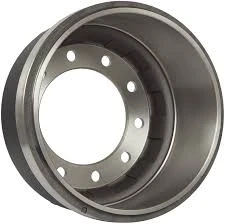
-
 Afrikaans
Afrikaans -
 Albanian
Albanian -
 Amharic
Amharic -
 Arabic
Arabic -
 Armenian
Armenian -
 Azerbaijani
Azerbaijani -
 Basque
Basque -
 Belarusian
Belarusian -
 Bengali
Bengali -
 Bosnian
Bosnian -
 Bulgarian
Bulgarian -
 Catalan
Catalan -
 Cebuano
Cebuano -
 Corsican
Corsican -
 Croatian
Croatian -
 Czech
Czech -
 Danish
Danish -
 Dutch
Dutch -
 ພາສາອັງກິດ
ພາສາອັງກິດ -
 Esperanto
Esperanto -
 Estonian
Estonian -
 Finnish
Finnish -
 French
French -
 Frisian
Frisian -
 Galician
Galician -
 Georgian
Georgian -
 German
German -
 Greek
Greek -
 Gujarati
Gujarati -
 Haitian Creole
Haitian Creole -
 hausa
hausa -
 hawaiian
hawaiian -
 Hebrew
Hebrew -
 Hindi
Hindi -
 Miao
Miao -
 Hungarian
Hungarian -
 Icelandic
Icelandic -
 igbo
igbo -
 Indonesian
Indonesian -
 irish
irish -
 Italian
Italian -
 Japanese
Japanese -
 Javanese
Javanese -
 Kannada
Kannada -
 kazakh
kazakh -
 Khmer
Khmer -
 Rwandese
Rwandese -
 Korean
Korean -
 Kurdish
Kurdish -
 Kyrgyz
Kyrgyz -
 Lao
Lao -
 Latin
Latin -
 Latvian
Latvian -
 Lithuanian
Lithuanian -
 Luxembourgish
Luxembourgish -
 Macedonian
Macedonian -
 Malgashi
Malgashi -
 Malay
Malay -
 Malayalam
Malayalam -
 Maltese
Maltese -
 Maori
Maori -
 Marathi
Marathi -
 Mongolian
Mongolian -
 Myanmar
Myanmar -
 Nepali
Nepali -
 Norwegian
Norwegian -
 Norwegian
Norwegian -
 Occitan
Occitan -
 Pashto
Pashto -
 Persian
Persian -
 Polish
Polish -
 Portuguese
Portuguese -
 Punjabi
Punjabi -
 Romanian
Romanian -
 Russian
Russian -
 Samoan
Samoan -
 Scottish Gaelic
Scottish Gaelic -
 Serbian
Serbian -
 Sesotho
Sesotho -
 Shona
Shona -
 Sindhi
Sindhi -
 Sinhala
Sinhala -
 Slovak
Slovak -
 Slovenian
Slovenian -
 Somali
Somali -
 Spanish
Spanish -
 Sundanese
Sundanese -
 Swahili
Swahili -
 Swedish
Swedish -
 Tagalog
Tagalog -
 Tajik
Tajik -
 Tamil
Tamil -
 Tatar
Tatar -
 Telugu
Telugu -
 Thai
Thai -
 Turkish
Turkish -
 Turkmen
Turkmen -
 Ukrainian
Ukrainian -
 Urdu
Urdu -
 Uighur
Uighur -
 Uzbek
Uzbek -
 Vietnamese
Vietnamese -
 Welsh
Welsh -
 Bantu
Bantu -
 Yiddish
Yiddish -
 Yoruba
Yoruba -
 Zulu
Zulu
Understanding the Impact of Out of Balance Brake Drum on Vehicle Performance
Understanding Out of Balance Brake Drum Causes and Solutions
Brake drums play a crucial role in the safety and performance of vehicles, particularly those that are heavier or used for towing. When a brake drum is out of balance, it can lead to a range of problems that not only affect braking efficiency but also overall vehicle stability and longevity. This article delves into the causes of out-of-balance brake drums, the symptoms associated with this issue, and potential solutions to rectify the problem.
Causes of Out of Balance Brake Drum
There are several reasons why a brake drum may become out of balance. One of the most common causes is wear and tear. Over time, brake drums can develop varied wear patterns due to uneven braking force, dirt, and debris accumulation, as well as heat distortion from excessive friction. When a brake drum is worn unevenly, it can cause an imbalance, leading to vibrations during braking.
Another significant factor is improper installation or misalignment. If a brake drum is not correctly installed or if its mounting surface is damaged or corroded, it may not sit evenly, resulting in an out-of-balance condition. Additionally, using aftermarket or substandard brake drum components can increase the risk of imbalance.
Environmental conditions can also contribute to this issue. Rust and corrosion, especially in regions with high humidity and road salt usage, can lead to an imbalance in the brake drum. The accumulation of rust on the drum's surface can cause uneven contact with brake shoes, further exacerbating the imbalance.
Symptoms of Out of Balance Brake Drum
Drivers may experience several noticeable symptoms when a brake drum is out of balance. One of the most common signs is vibrations during braking, which can be felt in the steering wheel or the vehicle chassis. This vibration can lead to a dangerous driving experience, especially at higher speeds.
out of balance brake drum

Another symptom is decreased braking efficiency. An out-of-balance brake drum can lead to inconsistent braking power, which may result in longer stopping distances and difficulty controlling the vehicle during emergency braking situations.
In addition, unusual noises such as grinding or squealing can occur if the brake drum is worn unevenly or misaligned
. These sounds should never be ignored, as they signal that maintenance is needed.Solutions to Correct Out of Balance Brake Drums
Addressing an out-of-balance brake drum involves a few steps to restore proper function. The first step is to conduct a thorough inspection of the brake system. Mechanics should check for signs of uneven wear, rust, or any damage to the drum itself.
If the brake drum exhibits wear, it may need to be resurfaced or replaced. Resurfacing can help restore evenness, provided the drum has sufficient material left. If it is worn beyond specification, a complete replacement is necessary.
Proper installation is also essential for maintaining balance. Ensuring that the brake drum is installed correctly and that all components are free from corrosion will mitigate the risk of future imbalance issues.
Conclusion
Maintaining the balance of brake drums is vital for vehicle safety and performance. Regular inspections and addressing any symptoms early can prevent further complications and ensure that your vehicle's braking system operates smoothly. Understanding the causes and solutions of out-of-balance brake drums empowers vehicle owners to take proactive measures that lead to safer driving experiences.
-
What Are Drum Brakesຂ່າວJul.07,2025
-
Understanding Brake Drum Materialຂ່າວJul.07,2025
-
Semi-Trailer Brake Drum: A Key Component for Extreme Loads and Long-Distance Transportຂ່າວJul.07,2025
-
Drum Brake Pads for Saleຂ່າວJul.07,2025
-
Brake Drums for Saleຂ່າວJul.07,2025
-
Brake Drum Manufacturerຂ່າວJul.07,2025
-
Aluminum Brake Drums: The Future of High-Performance Carsຂ່າວJul.07,2025
